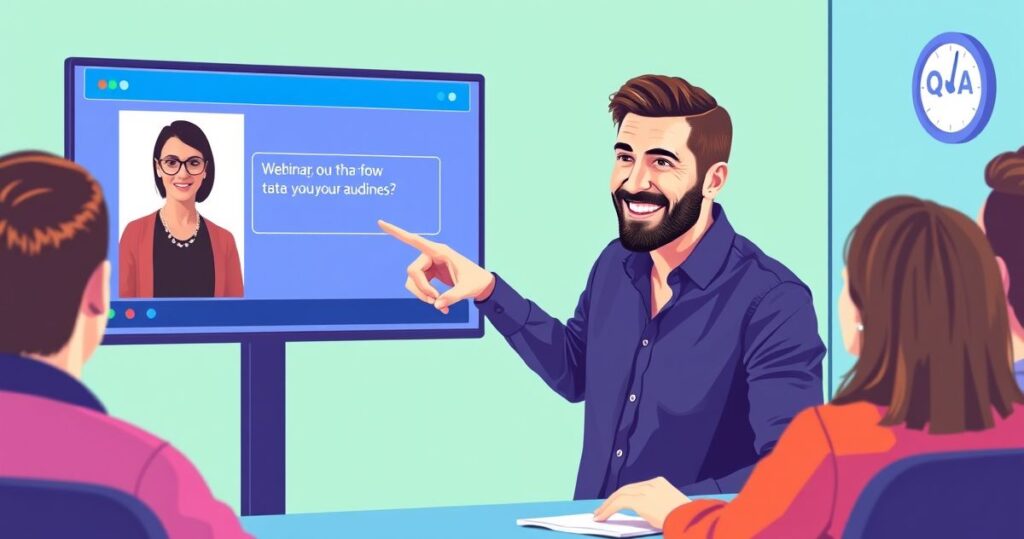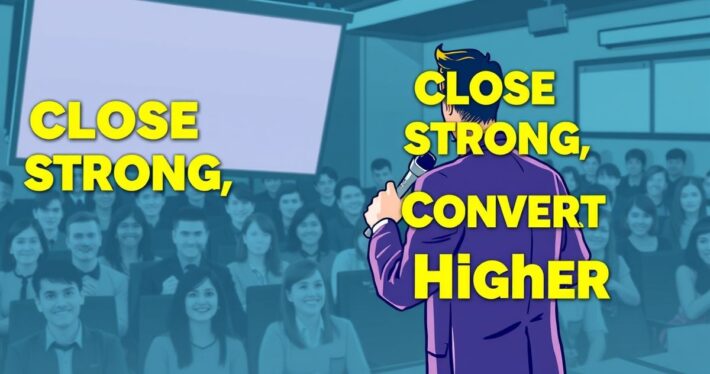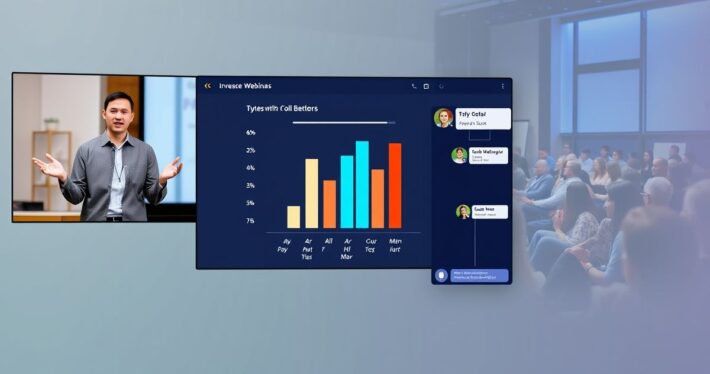How to Handle Audience Questions Without Losing Flow

Handling audience questions during a webinar is both an art and a science. It’s where you can showcase your expertise, build rapport, and foster engagement—but it’s also a potential minefield for losing your flow, derailing your presentation, or even creating awkward silences. So, how do you strike the perfect balance?
Let’s dive into proven strategies that will help you manage audience questions like a pro, whether you’re hosting a product demo, a thought leadership session, or a high-stakes sales webinar.
Why Audience Questions Matter (And Why They Can Be Tricky)
First things first: audience questions are gold. They show that your attendees are engaged, curious, and invested in your content. But let’s be honest—they can also throw you off your game if you’re not prepared.
Picture this: You’re delivering a killer presentation, right on schedule, and then BAM—someone asks a question that’s either off-topic, too detailed, or requires a 10-minute explanation. Suddenly, your flow’s disrupted, the momentum is gone, and you’re scrambling to get back on track. Sound familiar?
The key is to anticipate these moments and have a game plan in place. Here’s how.
Pre-Webinar Prep: Setting the Stage for Success
Preparation is your best friend when it comes to handling audience questions. Before the webinar, consider:
-
Create a Q&A Framework
Decide when and how you’ll take questions. Will it be throughout the presentation or at the end? Both approaches have pros and cons. Live Q&A can make your session feel more interactive, while saving questions for the end ensures your presentation stays on track. -
Anticipate Common Questions
Think like your audience. What questions are they likely to ask? Jot down answers beforehand so you’re ready to respond quickly. Bonus tip: Use your slide outline creator to include a Q&A slide with pre-written answers to common questions. -
Set Clear Expectations
At the start of your webinar, let attendees know how you’ll handle questions. For example: “Feel free to drop your questions in the chat, and I’ll address them during our dedicated Q&A session.”
During the Webinar: Tactics for Smooth Question Handling
Now, here’s where the rubber meets the road. Here are my go-to strategies for handling questions without losing flow:
-
The Pause-and-Acknowledge Technique
When a question pops up, pause briefly, acknowledge it, and decide whether to address it immediately or later. For example: “Great question about pricing—let me cover that in just a moment as I wrap up this section.” -
Use a Moderator or Co-Host
A moderator can screen questions, filter out irrelevant ones, and even summarize multiple similar questions. This takes the pressure off you and keeps the flow smooth. -
Keep It Brief
Answer questions succinctly to avoid derailing your presentation. If a question requires a detailed response, consider saying: “That’s a great topic—let’s dive deeper during the Q&A session or after the webinar.” -
Leverage Your Slides
If a question is related to a specific slide, jump back to that slide to provide context. This keeps the conversation relevant and focused.
Real-World Example: How I Saved a Webinar from Disaster
A few years ago, I was hosting a webinar on SEO strategies when someone asked a question about a technical issue I wasn’t fully prepared to answer. Instead of panicking, I said: “That’s a fantastic question, and it’s a bit technical. Let me give you a high-level overview and follow up with detailed resources after the webinar.”
This diffused the pressure, kept the session moving, and the attendee appreciated my honesty. Plus, I turned it into an opportunity to nurture the lead post-webinar.
Post-Webinar: Wrapping Up Loose Ends
Even after the webinar, there’s still work to do. Here’s how to handle unanswered questions:
-
Follow Up Via Email
Send a follow-up email addressing any questions you didn’t get to. This shows you care and keeps the conversation going. -
Create a FAQ Resource
Use the questions from your webinar to create a FAQ document, blog post, or video. This not only provides value but also builds your credibility as a resource.
Pro Tips for High-Stakes Webinars
If you’re hosting a sales-focused webinar, every second counts. Here’s how to handle questions without losing your conversion momentum:
-
Defer Pricing Questions
If someone asks about pricing before you’ve fully presented the offer, say: “I’ll break down the pricing in just a moment—let me first show you how this solution can transform your business.” -
Use Guarantees to Resolve Concerns
If attendees express hesitations, leverage your risk-reversal guarantee generator to confidently address objections. For example: “I understand you’re concerned about results. That’s why we offer a 30-day money-back guarantee if you’re not 100% satisfied.”
Common Pitfalls to Avoid
Even with the best strategies, things can go wrong. Here’s what to watch out for:
-
Over-Explaining
Keep answers concise. Rambling can bore your audience and kill your flow. -
Ignoring Tough Questions
Dodging questions erodes trust. If you’re unsure, say: “I don’t have the exact answer right now, but I’ll get back to you with more details.” -
Letting One Attendee Dominate
If one person keeps asking questions, gently redirect: “Thanks for your enthusiasm—let’s give others a chance to ask their questions too.”
Conclusion: Master the Art of Q&A
Handling audience questions without losing flow isn’t just about answering queries—it’s about maintaining control, keeping your audience engaged, and driving your presentation toward its goal.
By planning ahead, using smart tactics during the webinar, and wrapping up effectively, you’ll transform Q&A from a potential disruption into a powerful tool for connection and conversion.



